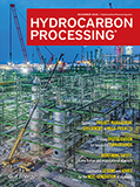August 2024
Petrochemical Technologies
The purification of benzoic acid using dividing wall columns
In one recent project for a customer based in Asia, the authors’ company suggested the combination of distillation and crystallization techniques to obtain high-quality purified benzoic acid. Encouraged by the successful startup of this processing train, the customer began to schedule a second project. The authors’ company was asked to optimize the purification process to improve cost and operational efficiencies. The two existing columns, which remove lights and heavies, respectively, from the crude benzoic acid feedstock were investigated to identify key opportunities. The feasibility study based on the feed composition confirmed that the existing columns could be converted into a single dividing wall column (DWC).
This is a preview of our premium content. Thank you for your interest—please log in or subscribe to read the full article.








Comments